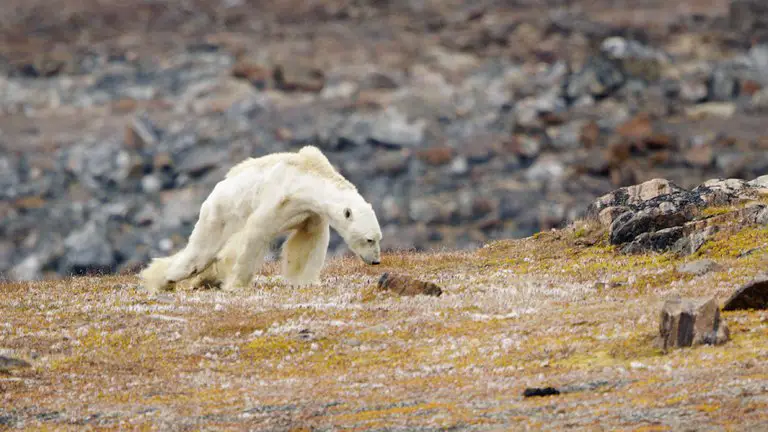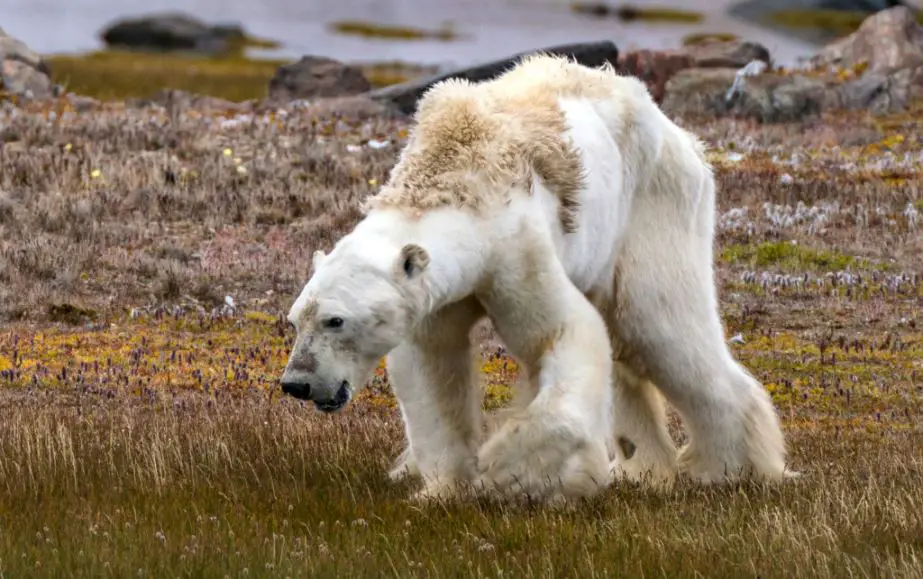Photographer Paul Nicklen from National Geographic and filmmakers from the conservation group Sea Legacy captured footage of a polar bear on the Baffin Islands in Canada. The video went viral, depicting the emaciated creature traversing an iceless wasteland, and eliciting a heartrending response from many viewers. Nonetheless, some experts have suggested that the widely-viewed video may not be entirely accurate.

Last August, while navigating around a bend on his boat, Paul Nicklen initially mistook what appeared to be a white blanket draped over a rock. However, upon further inspection, he realized that the object was a polar bear, which he believed to be deceased. To his surprise, the bear was still alive and struggling to stand. As a visual storyteller, Nicklen snapped a photo and shared it on Instagram, which generated an immense response.

The photographer decided to return with his conservation team and the appropriate filming equipment to capture the reality of a starving polar bear and to create a tangible representation of scientific data. His intention was to show people the stark truth of what a starving polar bear actually looks like.
“It rips your heart out of your chest,” Nicklen said. “As soon as he did a slow stand on his feet, everybody on the team just started to cry.”
“When scientists say bears are going extinct, I want people to realize what it looks like,” says photographer Paul Nicklen pic.twitter.com/foBaqXqOQ4
— National Geographic (@NatGeo) December 9, 2017
In the video, the bear is depicted rummaging through a garbage container, serving as an example of the consequences of climate change. The accompanying explanation to the video highlights that with the rise in temperatures and the melting of sea ice, polar bears are losing their access to their primary source of sustenance, which is seals.
View this post on Instagram
Polar bears rely on ocean ice as a platform to hunt seals. However, with the warming of the planet, the ice cover is melting earlier, thus restricting the amount of time that polar bears have to hunt and accumulate their fat reserves before moving to land. Failure to do so can result in polar bears becoming thin and suffering from poor physical health by the end of the long ice-free summers. Biologists are in agreement that as the ice cover continues to decrease, there will be a significant decline in the polar bear population, which currently stands at around 26,000 globally, according to wildlife officials. A 2015 assessment predicted a reduction of over 30% in the polar bear population by 2050.
Here’s the dramatic footage:

